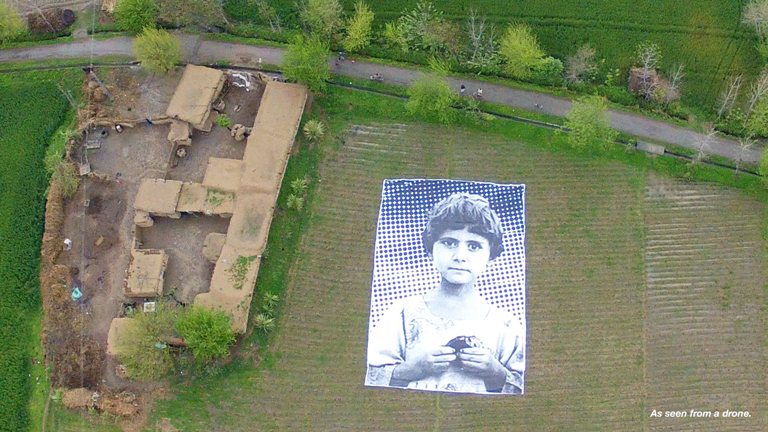
The portrait of the nameless child was released with the hashtag #NotABugSplat in anticipation that the image of the young girl might make drone operators think twice about an airstrike.
“In military slang, predator drone operators often refer to kills as ‘bug splats,” since viewing the body through a grainy video image gives the sense of an insect being crushed,” said a message on the group’s website. “Now, when viewed by a drone camera, what an operator sees on his screen is not an anonymous dot on the landscape, but an innocent child victim’s face.”
Along with the UK-based charity Reprieve Foundation for Fundamental Rights (FFR), the artists said they hope the image will create empathy and introspection amongst drone operators, and will create dialogue among policy makers, eventually leading to decisions that will save innocent lives.

Get daily National news
“Although there is awareness for drone attacks, it’s rarely humanized,” said FFR spokesperson Sakib Afridi.
The artists travelled inside the Khyber Pakhtunkhwa province and with the assistance of highly enthusiastic locals, unrolled the poster amongst mud huts and farms. The installation is also designed to be captured by satellites, in hope of it becoming a permanent part of the landscape on online mapping websites like Google Earth.
- At least 16 files have disappeared from the DOJ webpage for documents related to Jeffrey Epstein
- Australia plans tougher laws against displaying extremist flags after Bondi shooting
- U.S. launches anti-ISIS strikes in Syria after Americans killed: officials
- Epstein files: U.S. DOJ says more to come after 1st batch released
FFR says the child that is featured in the poster lost both her parents and two young siblings in a drone attack.
UN expert investigates U.S. drone attacks, targeted killings that involve civilian casualties
In January, a UN expert launched a special investigation into drone warfare and targeted killings, which the United States relies on as a front-line weapon in its global war against al-Qaida.
One of the three countries requesting the investigation was Pakistan, which officially opposes the use of U.S. drones on its territory as an infringement on its sovereignty but is believed to have tacitly approved some strikes in the past. Pakistani officials say the drone strikes kill many innocent civilians, which the U.S. has rejected.
According to the Long War Journal, which tracks drone attacks, there were 35 strikes in Pakistan during 2008. That number grew to 117 in 2010, then fell to 64 in 2011 and 46 last year.
In October 2013, U.S. Press Secretary Jay Carney pushed back on the Amnesty International’s drone report that the U.S. violated international laws with strikes in Pakistan.
“To the extent these reports claim that the U.S. has acted contrary to international law, we would strongly disagree,” said Carney.
Carney also said the Obama administration has “repeatedly emphasized the extraordinary care that they take to make sure counter-terrorism actions are in accordance with all applicable law” and that using drone aircraft against terror suspects over sending in troops or using other weapons is better as Washington is “choosing the course of action least likely to result in the loss of innocent life.”








Comments